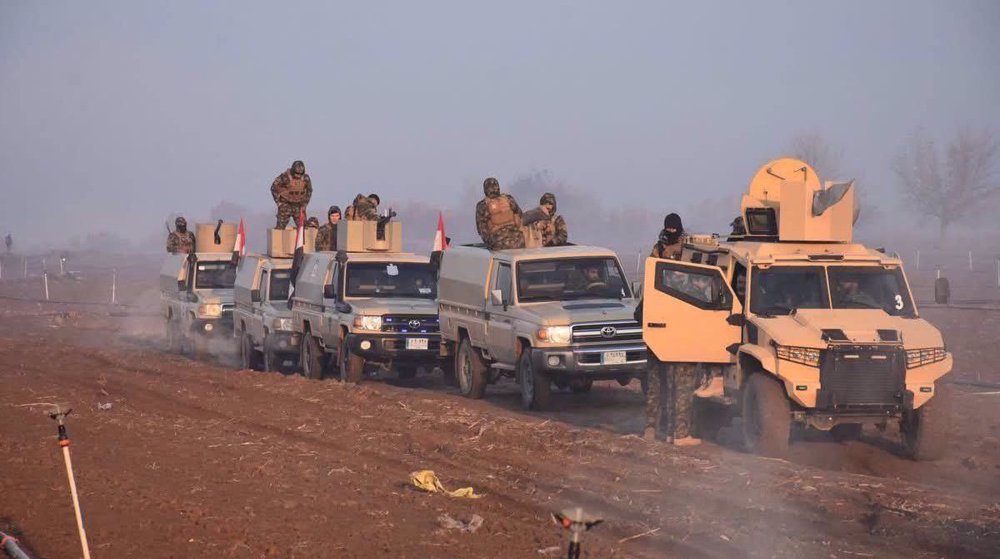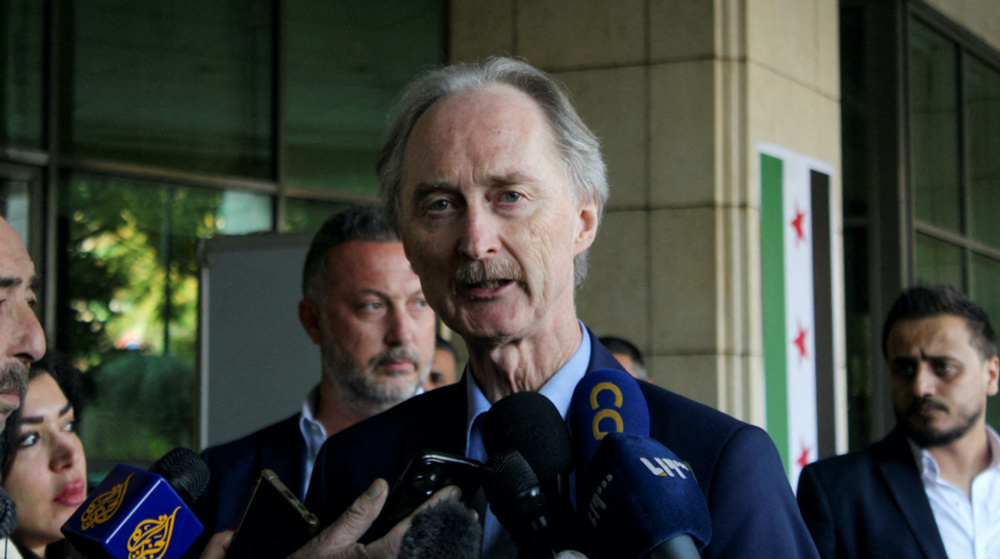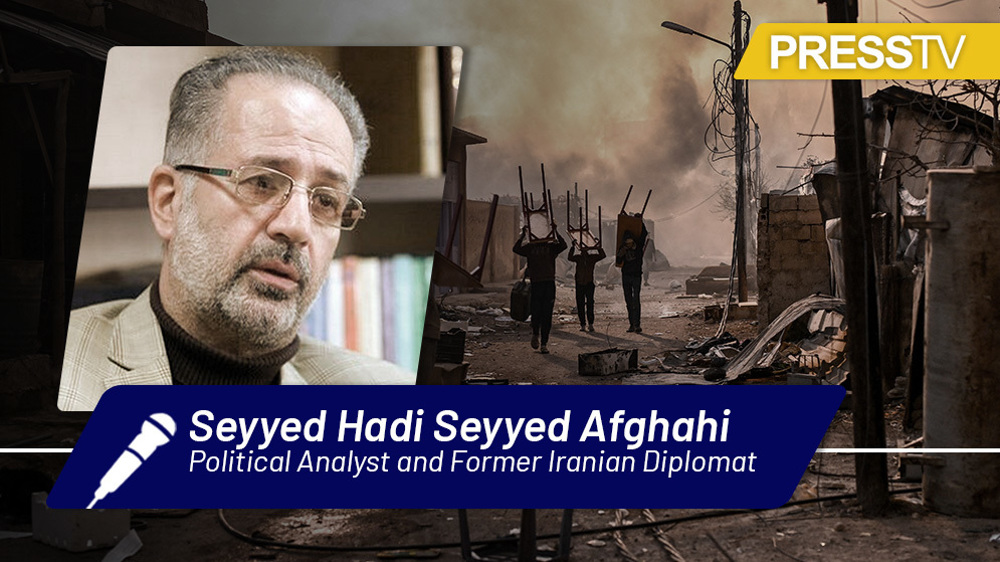1000s of civilians leave Eastern Ghouta amid Syria army gains against militants
Russia and Syria say thousands of civilians have managed to flee Eastern Ghouta less than a day after government forces advanced into a strategic town south of the militant-held Damascus suburb.
The Syrian state television reported Thursday that some 10,000 people have so far left Eastern Ghouta for safe government-held areas as joint Damascus-UN aid delivery operations are underway in the suburban region.
The RIA new agency also quoted Russian Major General Vladimir Zolotukhin as saying on Thursday that, "We expect no less than 13,000 people to have left by the end of the day."
Earlier in the day, the Russian Defense Ministry extended a humanitarian pause in fighting for two days in parts of Eastern Ghouta to help more civilians leave the operation zone through the safe corridors set up by Syria and Russia.
The so-called Syrian Observatory for Human Rights has put the number at 12,500 with its director, Rami Abdulrahman, saying that those who escaped were mostly from the key Eastern Ghouta town of Hamouriyah and nearby areas.
According to the Observatory, Syrian forces on Thursday took control of more than two-thirds of Eastern Ghouta, adding that the Syrian army was in control of more than 70 percent of the area.
Overnight on Wednesday, Syrian government forces, backed by the Russian air force, entered Hamouriyah, which is controlled by the Faylaq al-Rahman militant group, and retook control of parts of the town, located 12 kilometers from Damascus city center.
Eastern Ghouta fell to the militants in 2012, months after Syria plunged into crisis, and has since served as a launch pad for fatal mortar attacks against the residents and infrastructure of the Syrian capital.
The Syrian army has since mid-February been engaged in a push to liberate the region, which is controlled by a collection of militant groups, most notably the Takfiri terror groups of Jaish al-Islam and Jabhat Fateh al-Sham, commonly known as al-Nusra Front.
The civilian evacuations on Thursday is the largest of its kind since the onset of the Syrian army's counter-terrorism push.
After the humanitarian pause was announced, the International Committee of the Red Cross (ICRC) said a joint convoy of 25 trucks carrying food supplies had entered Eastern Ghouta and was on its way to Douma, the largest and most populated town in the area.
The focus of the two-day truce, according to the Russian Ministry, is humanitarian operations in the town of Douma, situated some 10 kilometers from the center of Damascus.
The convoy is organized with the United Nations and the Syria Red Crescent Society.
The ICRC added that its president, Peter Maurer, "is travelling with the convoy to see first-hand the process of delivering the assistance and to talk with residents."
The humanitarian corridors were set up by Syria and Russia after the UN Security Council adopted Resolution 2401, which called for a ceasefire in the Arab country. Since then, Russia has been announcing daily pauses in fighting to facilitate civilian evacuations and aid delivery.
The truce, however, does not apply to the Takfiri Daesh and al-Nusra terror outfits as well as “all other individuals, groups, undertakings and entities associated with terrorist groups.”
To slow down the Syrian army's gains, the militants have been shelling those safe routes to keep the civilians in Eastern Ghouta as human shields.
RT reported on Thursday that some militants had laid down their arms and left Eastern Ghouta as part of an effort to separate the so-called moderate opposition fighters from Takfiri terrorists.
Hamas condemns Israeli evacuation order of Indonesian Hospital
VIDEO | Yemen resistance remains resolute
'Easy target': Yemen warns 4th US carrier within reach
Iran military awarded $40 mln worth of vessel building contracts
‘These kids need to be killed’: Shocking details of Israeli brutalities in Gaza
Yemen faces ‘highest burden’ of cholera globally: WHO
Settlement expansion proves Israel cannot be trusted for any peace deal: Hamas
VIDEO | Press TV's news headlines










 This makes it easy to access the Press TV website
This makes it easy to access the Press TV website